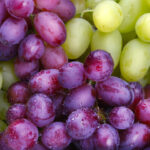Northern Chilean citrus struggles to keep above water

The dry, warm climate of northern Chile may protect its citrus growers from many of the freezes and plagues that strain plantations elsewhere, but the region certainly has not made the job for producers any easier.
Atunguayco Fruits Chile in the Limari Valley enjoys the advantage of coming into production for clementines and Navel oranges earlier than growers located further south in the central valley, explained company exporter Mathias Oteiza.
Despite the advantage, however, severe drought has Atunguayco's production in jeopardy.
"The problem we have this year is the drought in the North. If we don’t have water, we can’t produce. This year we had serious problems. Production dropped 40%," he told www.freshfruitportal.com.
"We have clementines and oranges. We couldn’t produce the oranges. We had to cut the water and direct the little water there was to the clementines. What I saw in the U.S. is that the price for oranges is beginning to increase drastically. There was a lack of oranges in California. The oranges clear out right away. Clients are asking me for oranges but we didn’t have the water to produce them."
Oteiza explained that a major problem for northern Chile comes from the lack of reservoir water, which has dropped to a critically low level this year.
In addition to restricting current plantations, Oteiza added that the drought had tied growers' hands, preventing them from switching to better crop varieties or planting more hectares.
"People can’t plant more. We’re already at the maximum for the water that we have. It’s already over planted. If grape growers want to compete with us, they’ll have to pull up their vines and plant clementines. But a lot of these people are tied up with exporters. They owe money and they don’t have the independence to change their crop so easily," he said.
Atunguayco currently has 80 hectares of citrus in production and an additional 80 more that will soon begin yielding fruit. If conditions permit, the company's volume could grow to two and a half times its current size.
The possibility for much greater volume offers the flip side to Atunguayco's situation. The company has an early-season advantage over other Chilean growers and once in the U.S., its fruit hits a sweet spot in terms of marketing.
"Chile in general comes in with volume in week 25 and we come in in week 20, so we have five weeks to get ahead," he said.
"We are pretty protected from the rest of Chile and South Africa. We’re pretty alone. Our only direct competitor is the fruit from California."
At the moment, Atunguayco enjoys a relatively empty market up until the end of its offering in week 27, when South Africa and Chile become more serious competitors. Peru and Uruguay may create greater competition in the future, but for now, Oteiza said the U.S. market is happy to receive its early clementines.
"I saw it run out of supply on both coasts. Everyone is short of citrus fruit. I didn’t see anyone (from Chile) present. The markets are swallowing up the little fruit there is," he said.
Although consumers have also expressed greater demand for oranges, the U.S. marketing order for the fruit has prevented Atunguayco from investing more extensively in the crop.
"The United States has a marketing order that protects its industry and you can’t sell [oranges] from September until the end of June. To get into the U.S. they ask for very high internal quality," he said.
He added that the company will still send one container of its Navel oranges to the U.S., to maintain consistency.
But due to the drought, almost 100% of company's orange production was lost. Water was rerouted this season in favor of saving clementines, the more reliable fruit for yielding profit.
"For now the business is going well but we have low productivity and post-harvest handling is hard. It’s a delicate fruit with high costs. Labor costs are rising. If you don’t have enough people to harvest, you lose the advantage of being early. It’s not easy to arrive to a balance and manage the business well to take advantage of the opportunity," he said.
"That’s the risk of the North."
















































